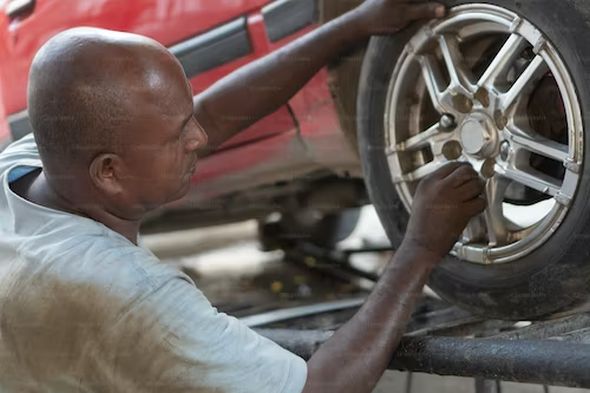Tire Maintenance Made Easy: Expert Tips to Boost Performance and Fuel Efficiency
Maintaining your tires is essential for ensuring their performance and fuel efficiency, yet too often, it needs to be noticed. Keeping an eye on the condition of your tires can save you time and money down the road. From choosing quality tires to examining tire pressure regularly, our expert guide will walk you through all the key aspects of tire maintenance – helping you get more out of every journey.

1. Invest in Quality Wheel Alignment Services
Investing in quality wheel alignment services is essential to maintain your car’s performance and ensure your safety on the road. Wheel misalignment can have serious consequences, such as uneven tire wear, poor handling, and increased fuel consumption. By getting professional wheel alignment services, you can prevent these issues and extend the life of your tires. Furthermore, a well-maintained car is less likely to break down and will save you money in the long run. So, pay attention to your wheels, and schedule regular alignment services to keep your vehicle running smoothly.
2. Make Sure Your Tires Are Properly Inflated
Properly inflating your car tires is crucial for achieving optimal performance and fuel efficiency when maintaining your vehicle. Inflating your tires to the manufacturer’s recommended pressure improves your car’s handling and braking and can also save you money at the pump. Underinflated tires increase rolling resistance, so your engine must work harder and consume more fuel.
On the other hand, overinflated tires can lead to a harsher ride and a decreased tire lifespan. Regularly checking and adjusting your tire pressure can improve your car’s overall performance and reduce your carbon footprint. So, the next time you fill up your tank, take a moment to check your tire pressure and enjoy a smoother, more efficient ride.
3. Rotate Your Tires Regularly
As you drive, each tire wears down at a different rate, and if left unattended, this can lead to uneven wear and tear. By rotating your tires, you’re essentially distributing the wear and tear across all four tires, prolonging their lifespan. And not only is regular rotation a preventative measure, but it’s also cost-effective in the long run. So why risk the safety of you and your passengers, as well as the longevity of your vehicle, when a simple rotation can do the trick? Make it a habit to rotate your tires, and let your car thank you.
4. Check Your Tire’s Tread Depth and Replace Worn Out Tires
Among the many things you need to keep an eye on, checking your tire’s tread depth should be at the top of your list. Worn-out tires could mean trouble when braking, especially in wet weather conditions. The recommended tread depth is 1.6mm, but replacing tires once they reach 3mm is always a good idea. Your tire’s tread gives you traction on the road, so replace them before it’s too late. Keep yourself and other drivers safe by taking this simple step.
5. Perform Regular Inspections on Your Wheel Bearings
It’s important to keep your vehicle in tip-top shape, which means paying attention to the smaller details, like the condition of your wheel bearings and brake system. These components are crucial in ensuring your car stops safely and smoothly, so it’s vital to perform regular inspections to keep them in good working order. Not only will this help prevent potential issues down the line, but it will also keep you and your passengers safe on the road. Remember, when it comes to car maintenance, safety always comes first.
6. Replace Old or Cracked Hoses, Belts, and Filters
It’s easy to underestimate the importance of hoses, belts, and filters in maintaining the longevity of your tire components. These seemingly minor parts ensure your vehicle runs smoothly and efficiently. Over time, hoses and belts can become brittle, worn, or even cracked, which could result in a sudden breakdown or even a dangerous driving situation.
Filters, conversely, can become clogged with dirt and debris, making it harder for your engine to breathe. By replacing these essential components regularly, you’ll enjoy a smoother ride and add years to the life of your tire components. So don’t wait until it’s too late – include regular inspections and replacements of these parts in your vehicle’s maintenance plan.

Taking proper care of your vehicle’s tire system is essential for a safe, reliable, and enjoyable ride. Following the guidelines discussed in this blog post can maximize performance and fuel efficiency while preventing premature wear and tear. Doing so is also a great way to keep your car running longer by mitigating potential risks of breakdowns or other costly repairs down the line. Keeping up with these regular maintenance tips should become second nature to protect your vehicle’s tire components and greatly enhance its safety.
